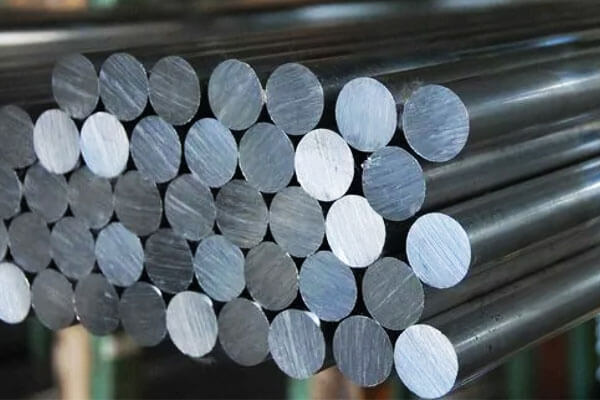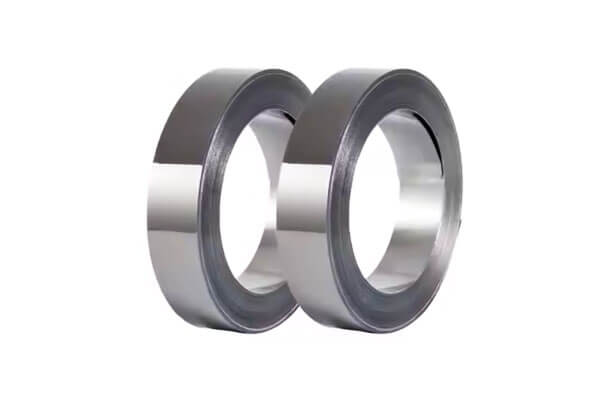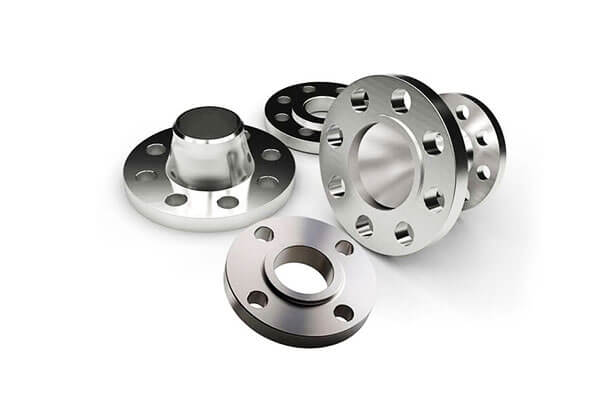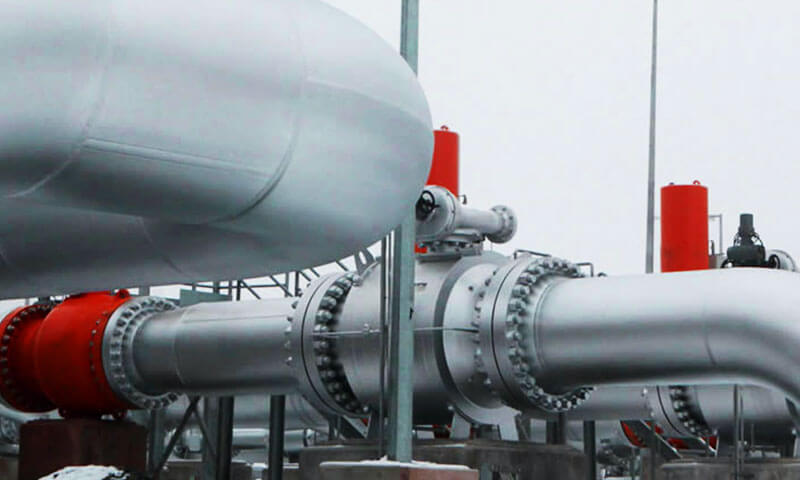1. Уводзіны
Nickel-based alloys have long been the foundation of high-performance materials used in extreme environments.
Their ability to withstand Высокая тэмпература, акіленне, і механічныя нагрузкі makes them indispensable in аэракасмічная, пакаленне электраэнергіі, і прамысловыя прыкладанні.
Сярод гэтых сплаваў, Нікелевы сплаў 75 (2.4951) has earned a reputation for its exceptional thermal stability, супраціў паўзучасці, і ўстойлівасць да карозіі
Originally developed in the 1940s for the Whittle jet engine turbine blades, this alloy has continued to prove its reliability and versatility у некалькіх галінах.
Its unique combination of Механічная сіла, цеплавая ўстойлівасць, і прастата вырабу makes it an attractive choice for applications requiring long-term durability in high-temperature environments.
Гэты артыкул змяшчае in-depth technical analysis of Nickel Alloy 75 (2.4951), covering:
- Chemical composition and microstructure, explaining how each element contributes to its superior properties.
- фізічны, цеплавы, and mechanical characteristics, detailing its performance under extreme conditions.
- Manufacturing techniques and processing challenges, highlighting the best fabrication methods.
- Industrial applications and economic feasibility, demonstrating its widespread use.
- Future trends and technological advancements, exploring the next phase of alloy development.
By the end of this discussion, readers will have a comprehensive understanding of Alloy 75 and why it remains a preferred material for demanding engineering applications.
2. Хімічны склад і мікраструктура
Primary Constituents and Their Functions
Нікелевы сплаў 75 (2.4951) гэта а nickel-chromium alloy designed for moderate high-temperature applications.

The following table outlines its key alloying elements and their contributions to material performance:
| Элемент | Склад (%) | Функцыя |
|---|---|---|
| Нік (У) | Сальда (~75.0%) | Provides oxidation and corrosion resistance, ensures thermal stability. |
| Хром (Кр) | 18.0–21,0% | Enhances oxidation and scaling resistance, strengthens the alloy. |
| Тытан (Аб) | 0.2–0.6% | Stabilizes carbides, improves high-temperature strength. |
| Вуглярод (C) | 0.08–0,15% | Forms carbides to enhance hardness and creep resistance. |
| Жалеза (F) | ≤5.0% | Adds mechanical strength without compromising corrosion resistance. |
| Крэмнім (І), Марганец (Мн), Copper (Cu) | ≤1,0%, ≤1,0%, ≤0.5% | Provide minor processing benefits and oxidation resistance. |
Мікраструктурны аналіз
- А FCC (Гранецэнтрычны кубік) крышталічная структура ensures high ductility and fracture toughness, which is essential for thermal cycling applications.
- Titanium and carbon form carbides (TiC, Cr₇C₃), significantly increasing the alloy’s creep strength at elevated temperatures.
- Microscopic examination (Сусветная арганізацыя па ахове здароўя, TEM, and XRD analysis) confirms that uniform grain structures contribute to improved fatigue resistance.
3. Physical and Thermal Properties
Basic Physical Properties
- Шчыльнасць: 8.37 G/CM³
- Дыяпазон плаўлення: 1340–1380 ° С
- Электрычны супраціў: 1.09 mm²/m (higher than stainless steel, making it ideal for heating elements)
Thermal Characteristics
| Маёмасць | Каштоўнасць | значнасць |
|---|---|---|
| Цеплаправоднасць | 11.7 W/m·°C | Ensures efficient heat dissipation in high-temperature environments. |
| Канкрэтная цеплаправодная магутнасць | 461 J/kg·°C | Improves thermal stability. |
| Каэфіцыент цеплавога пашырэння (Cte) | 11.0 мкм/м·°C (20-100°C) | Maintains structural integrity under thermal cycling. |
Oxidation Resistance and Thermal Stability
- Sustains oxidation resistance up to 1100°C, making it ideal for gas turbines and exhaust systems.
- Maintains mechanical strength under prolonged high-temperature exposure, reducing the risk of deformation.
Магнітныя ўласцівасці
- Low magnetic permeability (1.014 каля 200 Oersted) ensures suitability for applications requiring minimal electromagnetic interference.
4. Mechanical Properties and High-Temperature Performance of Nickel Alloy 75
This section provides a comprehensive analysis of Nickel Alloy 75 Механічныя ўласцівасці, behavior under extreme conditions, and testing methodologies to evaluate its long-term performance.
Трываласць на расцяжэнне, Сіла выхаду, and Elongation
Tensile properties define the alloy’s ability to withstand static and dynamic loading without experiencing permanent deformation or failure.
Нікелевы сплаў 75 падтрымлівае high tensile strength and reasonable ductility across a wide temperature range.

Key Tensile Properties
| Тэмпература (° С) | Трываласць на расцяжэнне (МПА) | Сіла выхаду (МПА) | Падаўжэнне (%) |
|---|---|---|---|
| Room Temp (25° С) | ~600 | ~275 | ~40 |
| 760° С | ~380 | ~190 | ~25 |
| 980° С | ~ 120 | ~60 | ~10 |
Назіранні:
- High strength at room temperature ensures excellent load-bearing capacity.
- Gradual reduction in tensile strength with increasing temperature is expected due to softening effects.
- Ductility remains sufficient at elevated temperatures, allowing for stress redistribution without brittle failure.
These properties make Нікелевы сплаў 75 suitable for components exposed to high temperatures and mechanical stress, напрыклад, лапаткі турбіны, exhaust ducts, and heat exchanger parts.
Creep Resistance and Long-Term Load Stability
Creep is a critical factor for materials used in бесперапыннае прымяненне пры высокай тэмпературы. It refers to the slow, time-dependent deformation under constant stress.
The ability to resist creep determines the longevity and reliability сплаву 75 in extreme environments.
Creep Performance Data
| Тэмпература (° С) | Стрэс (МПА) | Time to 1% Creep Strain (hrs) |
|---|---|---|
| 650° С | 250 | ~10,000 |
| 760° С | 150 | ~8,000 |
| 870° С | 75 | ~5,000 |
Асноўныя ўяўленні:
- Strong creep resistance at moderate temperatures (650–760°C) extends component lifespan in jet engines and power plant turbines.
- At 870°C, creep rate increases significantly, requiring careful design considerations for prolonged exposure.
- Сплаў 75 outperforms conventional stainless steels, making it a more reliable choice for high-temperature engineering applications.
To further enhance creep resistance, manufacturers often optimize grain size and perform controlled heat treatments, забеспячэнне microstructural stability during prolonged use.
Fatigue Strength and Fracture Toughness
Fatigue Resistance Under Cyclic Loading
It is a major concern in components subjected to repeated thermal cycling and mechanical stress, such as those in aerospace propulsion systems and gas turbines.
Сплаў 75 экспанаты strong fatigue resistance, preventing premature failure due to cyclic loading.
| Тэмпература (° С) | Stress Amplitude (МПА) | Cycles to Failure (x10⁶) |
|---|---|---|
| Room Temp (25° С) | 350 | ~10 |
| 650° С | 250 | ~6 |
| 760° С | 180 | ~4 |
Fracture Mechanics and Crack Propagation
Nickel Alloy 75’s fracture toughness is relatively high, прадухіленне catastrophic failure due to crack initiation and propagation.
Аднак, microstructural defects, асаджэнне карбіду, and prolonged thermal exposure can influence crack growth rates.
- Intergranular and transgranular fracture modes have been observed in fatigue testing, depending on temperature and stress levels.
- Optimized grain boundary strengthening techniques (via controlled cooling rates and minor alloying additions) палепшыць crack resistance.
Thermal Stability and Oxidation Resistance
Нікелевы сплаў 75 прызначаны для oxidation resistance up to 1100°C, making it suitable for components in combustion environments and high-temperature reactors.
Key Thermal Properties
| Маёмасць | Каштоўнасць | значнасць |
|---|---|---|
| Цеплаправоднасць | 11.7 W/m·°C | Allows heat dissipation in high-temperature applications. |
| Канкрэтная цеплаправодная магутнасць | 461 J/kg·°C | Ensures thermal stability. |
| Oxidation Limit | 1100° С | Provides excellent surface protection. |
| Каэфіцыент цеплавога пашырэння (20-100°C) | 11.0 мкм/м·°C | Reduces thermal stress during heating and cooling cycles. |
Oxidation and Surface Stability
- Хром (18–21%) forms a stable oxide layer, protecting the alloy from high-temperature degradation.
- Low sulfur and phosphorus content minimizes embrittlement in thermal cycling applications.
- Compatible with thermal barrier coatings (TBCs) and aluminized coatings to further enhance oxidation resistance.
5. Manufacturing and Processing Technologies of Nickel Alloy 75
Nickel Alloys – Alloy 75 is widely used in high-temperature applications,
necessitating precise manufacturing and processing techniques to maintain its механічная цэласнасць, цеплавая ўстойлівасць, and oxidation resistance.
This section explores the primary fabrication methods, heat treatment procedures, зварачныя праблемы,
and surface finishing technologies that enhance the alloy’s performance in demanding environments.
Primary Fabrication Techniques
Manufacturing Nickel Alloy 75 components involves ліццё, сувы, скрутка, і механічная апрацоўка, each with specific benefits depending on the application.
Ліццё
- Інвестыцыйнае ліццё is commonly used to produce complex aerospace components, лопасці турбіны, and exhaust parts.
- Sand casting and centrifugal casting are preferred for large-scale industrial furnace and heat exchanger components.
- Праблемы: High-temperature solidification can lead to Усаджванне сітаватасці, патрабавальны precision control of cooling rates.
Коўка і пракатка
- Hot forging enhances grain structure and mechanical properties, што робіць яго ідэальным для load-bearing components.
- Cold rolling is used to manufacture thin sheets and strips, забеспячэнне uniform thickness and surface finish.
- Выгод:
-
- Удасканальвае збожжавую структуру → Improves mechanical strength.
- Reduces internal defects → Enhances fatigue resistance.
- Enhances workability → Prepares alloy for subsequent machining.
Machining Characteristics
Нікелевы сплаў 75 presents умераны апрацоўванне difficulty З -за яго high work hardening rate and toughness.
| Machining Property | Effect on Processing |
|---|---|
| Праца ўцяплення | Cutting speeds must be optimized to minimize tool wear. |
| Цеплаправоднасць (Нізкі) | Generates excessive heat during machining. |
| Chip Formation | Requires sharp cutting tools with high thermal resistance. |
Best Machining Practices:
- Ужываць цвёрдасплаўныя або керамічныя рэжучыя інструменты to handle the alloy’s toughness.
- Employ high-pressure coolant systems to manage heat buildup.
- Optimize cutting speeds (30–50 м/я) and feed rates to prevent work hardening.

Heat Treatment and Thermal Processing
Heat treatment significantly influences the Механічныя ўласцівасці, stress resistance, and microstructural stability of Nickel Alloy 75.
Key Heat Treatment Processes
| Працэс | Тэмпература (° С) | Намер |
|---|---|---|
| Адпачынку | 980–1065°C | Змякчае матэрыял, здымае стрэс, and improves workability. |
| Лячэнне растворам | 980–1080°C | Dissolves carbide precipitates, homogenizes the microstructure. |
| Старэнне | 650–760°C | Enhances creep resistance and high-temperature strength. |
Heat Treatment Advantages:
- Improves grain refinement, enhancing fatigue strength.
- Reduces internal residual stresses, minimizing distortion in components.
- Павышае супраціў паўзучасці, ensuring longevity in high-temperature applications.
Welding and Joining Procedures
Нікелевы сплаў 75 можна зварваць з дапамогай розных метадаў, але controlling heat input and preventing carbide precipitation is crucial for maintaining mechanical integrity.
Зварачныя праблемы:
- Cracking Risk: High thermal expansion increases residual stress and hot cracking susceptibility.
- Oxidation Sensitivity: Патрабуецца inert gas shielding (Аргон, Helium) to prevent surface contamination.
- Карбідныя ападкі: Excessive heat input can lead to carbide formation, reducing ductility and toughness.
Рэкамендуемыя метады зваркі:
| Працэс зваркі | Перавагі | Праблемы |
|---|---|---|
| Зварка TIG (GTAW) | Дакладны кантроль, minimal heat input | Slower than MIG, requires skilled operation. |
| Зварка MIG (GMAW) | Больш хуткае адкладанне, good for thick sections | Higher heat input may lead to carbide precipitation. |
| Электронна-прамянёвая зварка (EMS) | Глыбокае пранікненне, мінімальныя цеплавыя скажэнні | High equipment cost. |
✔ Лепшая практыка: Послесварочная тэрмічная апрацоўка (Pwht) каля 650–760°C да relieve residual stress and prevent cracking.
Апрацоўка паверхняў і пакрыццяў
Паверхневыя працэдуры палепшыць Устойлівасць да акіслення, Каразія супраціву, and mechanical wear resistance, especially for components in экстрэмальныя ўмовы.
Oxidation-Resistant Coatings
- Aluminizing: Forms a protective Al₂O₃ layer, павышэнне oxidation resistance up to 1100°C.
- Thermal Barrier Coatings (TBCs): Yttria-stabilized zirconia (YSZ) coatings provide цеплаізаляцыя in jet engines.
Абарона ад карозіі
- Электрапаліроўка: Enhances surface smoothness, reducing stress concentrators.
- Нікеляванае пакрыццё: Improves corrosion resistance in marine and chemical processing applications.
Wear-Resistant Coatings
- Plasma Spray Coatings: Adds a ceramic or carbide layer, reducing surface degradation in асяроддзя з высокім каэфіцыентам трэння.
- Іённае азоцір: Hardens the surface for better wear and fatigue resistance.
✔ Лепшая практыка: Selecting coatings based on operating environment (тэмпература, механічнае ўздзеянне, і хімічнае ўздзеянне) ensures maximum durability.
Quality Control and Testing Methods
To maintain high performance and reliability, Нікелевы сплаў 75 components undergo strict quality control procedures.
Неразбуральнае тэставанне (Ndt)
- X-ray Inspection: Detects internal porosity and voids in cast or welded components.
- Ультрагукавое тэставанне (UT): Evaluates subsurface defects without damaging the material.
- Пранікальная праверка фарбавальніка (Dpi): Identifies surface cracks in turbine blades and aerospace parts.
Мікраструктурны аналіз
- Scanning Electron Microscopy (Сусветная арганізацыя па ахове здароўя): Examines grain boundaries and carbide distribution.
- X-ray Diffraction (XRD): Determines phase composition and crystallographic changes пасля тэрмічнай апрацоўкі.
Механічнае выпрабаванне
- Тэставанне на расцяжэнне (ASTM E8): Measures yield strength, мяжа трываласці на разрыў, і падаўжэнне.
- Тэставанне на цвёрдасць (Рокуэл, Вікерс): Evaluates surface hardness after heat treatment.
- Creep and Fatigue Testing (ASTM E139, E466): Ensures long-term durability under cyclic and static loads.
✔ Лепшая практыка: Implementing a Six Sigma-based quality control system enhances consistency and minimizes defects in high-performance components.
6. Стандарты, Тэхнічныя характарыстыкі
Maintaining quality and consistency remains paramount for Alloy 75. Manufacturers adhere to stringent international standards and implement rigorous quality control measures.
Сплаў 75 meets multiple international standards, уключаючы:
Нас: N06075
British Standards (BS): HR5, HR203, HR403, HR504
DIN Standards: 17742, 17750–17752
Стандарты ISO: 6207, 6208, 9723–9725
AECMA Pr EN Standards
7. Frontier Research and Technological Challenges of Nickel Alloy 75 (2.4951)
Innovations in Alloy Design
Computational Material Science
Recent advancements in машыннае навучанне (ML) and density functional theory (DFT) здзяйсняюць рэвалюцыю alloy optimization.
Гэтыя computational models reduce the need for traditional trial-and-error methods and accelerate the development of improved materials.
🔹 A 2023 study by MIT’s Materials Research Laboratory used ML algorithms to refine Alloy 75’s titanium-to-carbon ratio, у выніку чаго 15% improvement in creep resistance at 900°C.
🔹 DFT simulations predict phase stability under extreme conditions, забеспячэнне better oxidation and fatigue resistance in next-generation applications.
Nano-Engineered Precipitates
Scientists are exploring nano-structuring techniques to enhance the Механічныя ўласцівасці of Nickel Alloy 75.
🔹 German Aerospace Center (DLR) has successfully integrated 5–20 nm γ’ (Ni₃Ti) precipitates into the alloy through hot isostatic pressing (Бядро).
🔹 This nano-precipitate formation improves fatigue resistance by 18%, allowing components to endure 100,000+ thermal cycles in jet engines.
Hybrid Alloy Development
Combining Нікелевы сплаў 75 with ceramic composites is emerging as a next-generation material strategy.
🔹 The European Union’s Horizon 2020 праграма is funding research on карбід крэмнію (Sic) fiber-reinforced versions of Alloy 75, leading to prototypes with 30% higher specific strength at 1,100°C.
🔹 This innovation paves the way for hypersonic aircraft, ultra-efficient turbines, and next-gen propulsion systems.
Вытворчасць дабаўкі (AM) Breakthroughs
Laser Powder Bed Fusion (LPBF) Advancements
3D printing technologies have transformed Нікелевы сплаў 75 component manufacturing, significantly reducing material waste and lead times.

🔹 GE Additive has successfully 3D-printed turbine blades з 99.7% шчыльнасць using LPBF.
🔹 Optimized laser parameters (300 W power, 1.2 m/s scan speed) have led to 40% reductions in post-processing costs, while still maintaining ASTM tensile strength standards.
Challenges in Additive Manufacturing
Despite these breakthroughs, residual stress and anisotropic mechanical properties remain major obstacles.
🔹 A 2024 study by the Fraunhofer Institute found 12% variability in yield strength across different build orientations, underscoring the need for post-print heat treatment to homogenize the microstructure.
🔹 Current efforts focus on in-situ process monitoring, ensuring defect-free structures through real-time laser parameter adjustments.
Smart Components and Sensor Integration
Маніторынг стану ў рэжыме рэальнага часу
Інтэграцыя а fiber-optic sensors into Alloy 75 кампаненты is unlocking a new era of predictive maintenance and performance tracking.
🔹 Siemens Energy has embedded fiber-optic sensors in Нікелевы сплаў 75 лопасці турбіны, забеспячэнне live data on strain, тэмпература, and oxidation rates.
🔹 This IoT-driven approach has reduced unplanned downtime by 25%, improving efficiency in power generation and aviation sectors.
8. Conclusion
У заключэнне, Nickel Alloy Alloy 75 (2.4951) represents a harmonious blend of chemical precision, physical robustness, and mechanical reliability.
Its evolution from early aerospace turbine blades to indispensable industrial components underscores its enduring value.
As manufacturing techniques advance and research continues to push the boundaries, Сплаў 75 remains a strategic choice for high-temperature and high-stress applications.
If you’re looking for high-quality Nickel Alloy 75 прадукцыя, выбар Гэтае з'яўляецца ідэальным рашэннем для вашых вытворчых патрэбаў.



